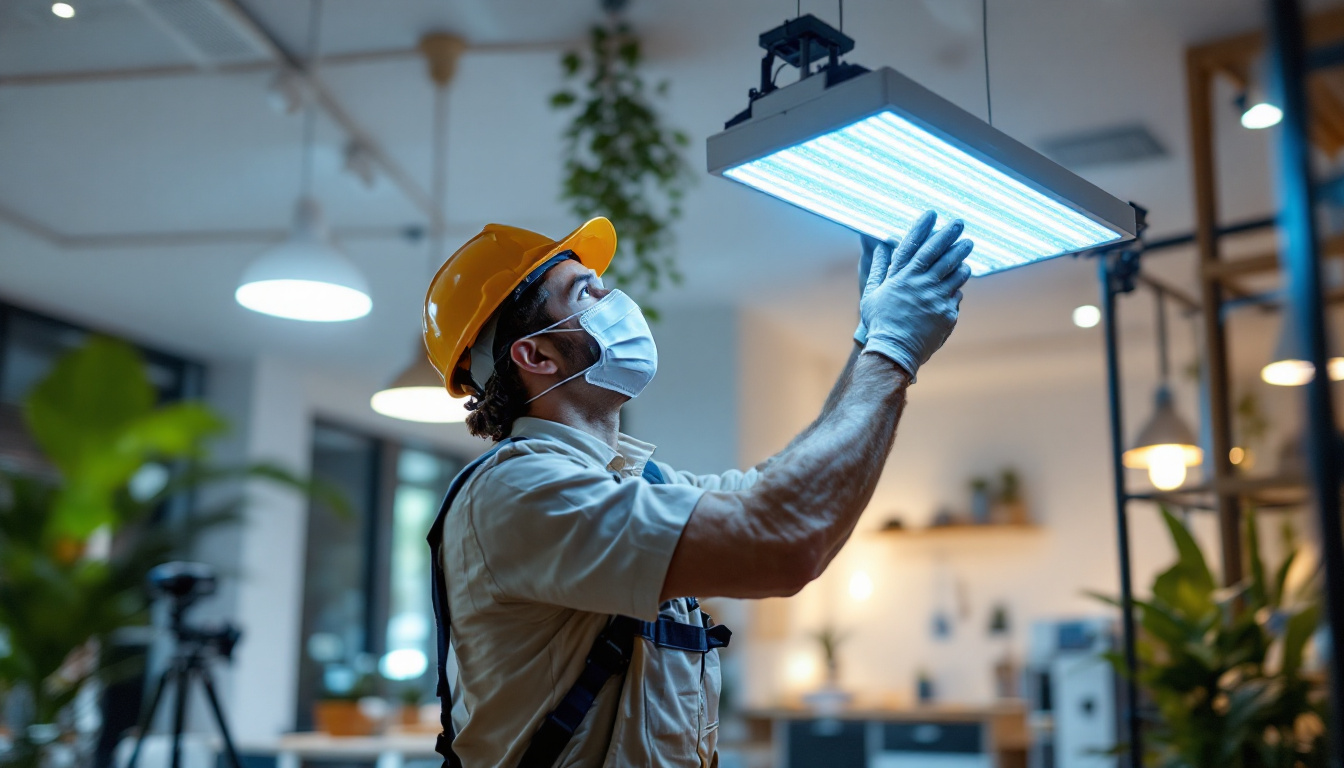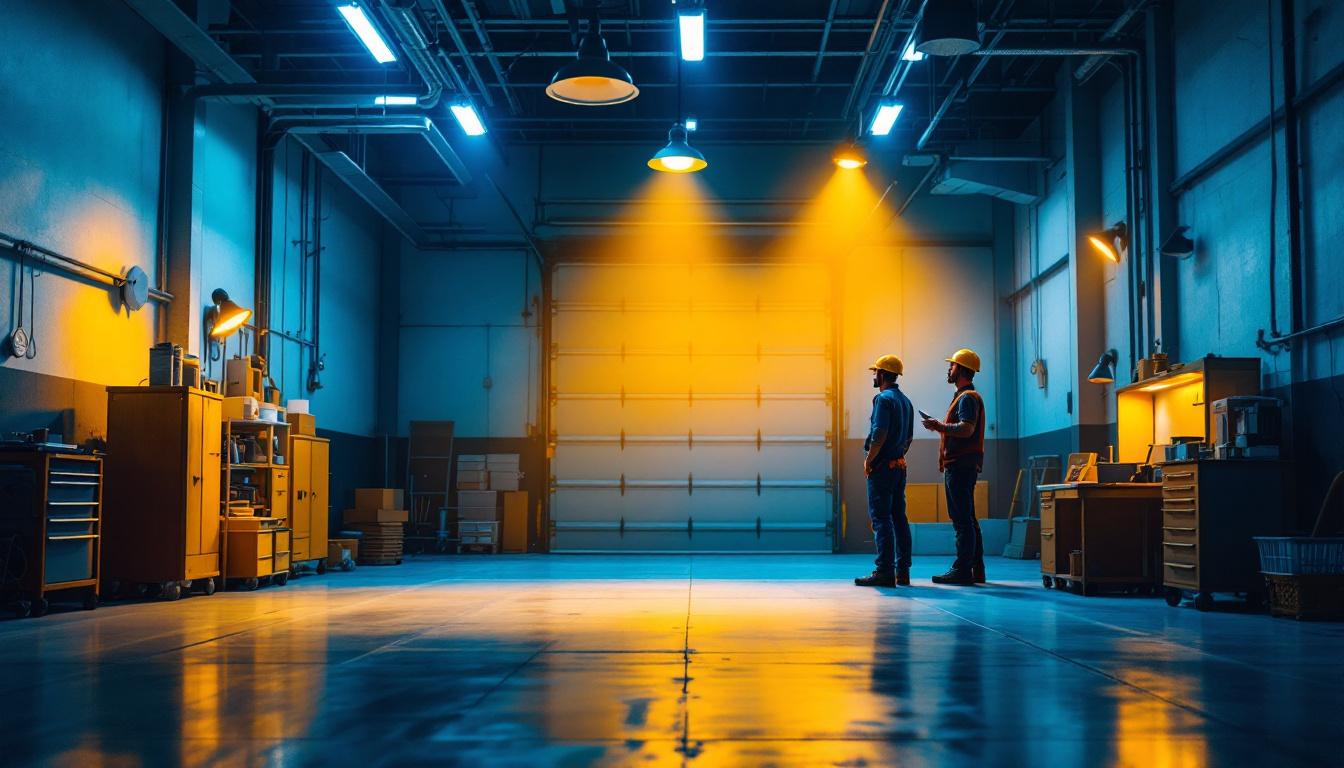
In the realm of lighting design, the choice of light covers plays a crucial role in achieving the desired aesthetic and functional outcomes. For lighting contractors, understanding the science behind light covers is essential not only for project success but also for meeting client expectations. This article delves into the various aspects of light covers, including their types, materials, and the principles that govern their effectiveness.
Light covers, also known as light diffusers or lenses, serve multiple purposes in lighting applications. They can enhance the quality of light, improve energy efficiency, and contribute to the overall design of a space. By understanding the significance of light covers, contractors can make informed decisions that impact both performance and aesthetics.
One of the primary functions of light covers is to enhance the quality of light emitted from fixtures. A well-designed cover can diffuse light evenly, reducing harsh shadows and minimizing glare. This is particularly important in spaces where visual comfort is a priority, such as offices, retail environments, and healthcare facilities.
For instance, a frosted acrylic cover can soften the light, creating a warm ambiance that is inviting and pleasant. In contrast, a clear cover may produce a more focused beam, which could be suitable for task lighting. Understanding these nuances allows contractors to select the appropriate cover based on the specific needs of the project.
Additionally, light covers can play a crucial role in color rendering. They can filter and enhance specific wavelengths of light, ensuring that colors appear more vibrant and true to life. This is particularly beneficial in retail settings where product presentation is key, or in art galleries where accurate color representation is essential. By choosing the right type of light cover, contractors can significantly improve the visual experience in a space, making it more engaging and appealing to occupants and visitors alike.
Another vital aspect of light covers is their impact on energy efficiency. The right cover can help maximize the output of a lighting fixture, allowing for lower wattage options without sacrificing illumination quality. This not only reduces energy consumption but also extends the lifespan of the lighting system.
Moreover, some light covers are designed to enhance the performance of LED fixtures, which are already known for their energy efficiency. By selecting covers that optimize light distribution, contractors can ensure that clients benefit from both cost savings and improved lighting quality.
Furthermore, the use of light covers can contribute to sustainability efforts within a project. By reducing energy consumption, they help lower the carbon footprint associated with lighting. Many modern covers are also made from recyclable materials, aligning with eco-friendly initiatives. This dual benefit of promoting energy efficiency while supporting sustainability can be a compelling selling point for contractors looking to appeal to environmentally-conscious clients. As the demand for green building practices continues to rise, incorporating energy-efficient light covers into designs can position contractors as leaders in responsible construction and renovation practices.
Light covers come in various types, each with its unique characteristics and applications. Understanding these types is essential for contractors aiming to provide tailored solutions to their clients.
Acrylic covers are among the most popular choices for light fixtures. They are lightweight, durable, and available in various finishes, including clear, frosted, and textured options. Acrylic is also an excellent choice for diffusing light, making it suitable for a wide range of applications.
These covers are often used in commercial settings, such as offices and retail spaces, where a balance of aesthetics and functionality is required. Additionally, acrylic covers can be easily shaped and molded, allowing for creative designs that enhance the overall look of the lighting installation. Their versatility extends to custom colors and patterns, enabling designers to match the lighting with the overall theme of the space, whether it be modern, industrial, or traditional.
Polycarbonate covers are another option that offers superior impact resistance compared to acrylic. This makes them ideal for environments where durability is a concern, such as warehouses, manufacturing facilities, and outdoor applications.
In addition to their strength, polycarbonate covers also provide excellent light diffusion. They can withstand harsh conditions without yellowing or becoming brittle, ensuring a long-lasting solution for lighting contractors and their clients. Furthermore, polycarbonate is often treated with UV stabilizers, which help maintain clarity and performance over time, making it a reliable choice for outdoor lighting installations. Its ability to resist extreme temperatures also makes it suitable for use in regions with fluctuating climates, ensuring that the lighting remains effective regardless of external conditions.
Glass covers offer a classic and elegant appearance that can elevate the aesthetic of any space. They are often used in decorative fixtures and can be treated with various coatings to enhance their performance. Glass covers can be clear, frosted, or patterned, allowing for a range of design possibilities.
While glass is heavier and more fragile than acrylic or polycarbonate, its ability to provide a high-quality light output makes it a preferred choice for upscale residential and commercial projects. Contractors should consider the balance between aesthetics and practicality when recommending glass covers to clients. Additionally, glass covers can be combined with LED technology to create stunning visual effects, such as color-changing lights or intricate shadow patterns, which can transform a simple lighting fixture into a focal point of the room. The ability to incorporate smart lighting solutions with glass covers also opens up new avenues for energy efficiency and user control, appealing to modern consumers who prioritize sustainability and innovation in their home or business environments.
The choice of material for light covers significantly impacts their performance, durability, and overall effectiveness. Understanding the properties of different materials helps contractors make informed decisions that align with project requirements.
Light transmission refers to the amount of light that passes through a cover. Different materials have varying levels of light transmission, which can affect the brightness and quality of illumination in a space. For example, clear acrylic covers typically allow for higher light transmission compared to frosted options, which diffuse light more effectively.
Contractors should assess the specific lighting needs of a project to determine the appropriate level of light transmission required. Balancing brightness with comfort is key, especially in environments where visual tasks are performed.
UV resistance is another critical factor to consider, particularly in spaces exposed to direct sunlight. Materials like polycarbonate and certain types of acrylic are designed to resist UV degradation, ensuring that the light cover maintains its clarity and performance over time.
Choosing UV-resistant materials is essential for outdoor applications, as exposure to sunlight can lead to yellowing and brittleness, ultimately compromising the integrity of the lighting system. Contractors should prioritize UV resistance in their material selection for long-lasting installations.
Thermal stability refers to a material’s ability to withstand temperature fluctuations without deforming or losing its properties. This is particularly important in environments with varying temperatures, such as industrial settings or areas with high-intensity lighting.
Materials like polycarbonate exhibit excellent thermal stability, making them suitable for use in fixtures that generate significant heat. Contractors should consider the thermal characteristics of materials when designing lighting systems to ensure optimal performance and longevity.
Proper installation of light covers is crucial for achieving the desired lighting effects and ensuring the longevity of the fixtures. Contractors must be aware of various installation techniques and best practices to avoid common pitfalls.
Different types of light covers may require specific mounting techniques to ensure stability and alignment. For instance, some covers may snap into place, while others may need to be secured with screws or clips. Understanding the mounting requirements for each type of cover is essential for a successful installation.
Additionally, contractors should consider the weight and size of the cover when determining the mounting method. Ensuring that the cover is securely attached will prevent issues such as sagging or misalignment, which can affect the overall appearance and performance of the lighting system.
In certain applications, particularly those exposed to moisture or dust, sealing and gasketing become critical. Proper sealing prevents contaminants from entering the fixture, which can lead to reduced performance and increased maintenance costs.
Contractors should assess the environmental conditions of the installation site and select appropriate sealing materials to ensure that light covers remain functional and aesthetically pleasing over time.
Regular maintenance of light covers is essential to preserve their functionality and appearance. Contractors should educate clients on proper care techniques to maximize the lifespan of their lighting systems.
Cleaning light covers is a straightforward process, but it requires the right techniques to avoid damage. For acrylic and polycarbonate covers, using a soft cloth and mild soap is often sufficient. Avoid abrasive cleaners that can scratch the surface and diminish clarity.
Glass covers may require more careful handling due to their fragility. Using a glass cleaner and a microfiber cloth can help maintain their shine and transparency. Contractors should provide clients with clear instructions on how to clean their light covers effectively.
Regular inspections of light covers can help identify issues such as cracks, yellowing, or discoloration. Addressing these problems promptly can prevent further damage and ensure optimal lighting performance.
In cases where covers are severely damaged or degraded, replacement may be necessary. Contractors should establish a maintenance schedule that includes periodic inspections to ensure that clients’ lighting systems remain in top condition.
Understanding the science behind light covers is essential for lighting contractors aiming to deliver high-quality, efficient, and aesthetically pleasing lighting solutions. By considering the various types of light covers, their material properties, installation techniques, and maintenance practices, contractors can enhance their expertise and better serve their clients.
As the lighting industry continues to evolve, staying informed about advancements in light cover technology and design will empower contractors to make informed decisions that lead to successful project outcomes. Embracing this knowledge not only benefits contractors but also enhances the overall experience for clients seeking innovative lighting solutions.
Ready to elevate your lighting projects with the perfect light covers? At LumenWholesale, we offer an extensive selection of spec-grade lighting products that combine quality, affordability, and convenience. Say goodbye to inflated markups and hello to unbeatable wholesale prices, all while enjoying the benefits of free shipping on bulk orders. Whether you’re enhancing light quality, prioritizing energy efficiency, or seeking innovative solutions, our products meet the highest industry standards. Don’t compromise on your lighting needs. Wholesale Lighting at the Best Value is just a click away. Partner with LumenWholesale today and illuminate your projects with confidence.

Discover the essential insights lighting contractors need about UV disinfecting lights and air purifier fixtures.

Discover the key essentials of lighting certification for contractors, exploring the benefits, requirements, and pathways to enhance your professional credentials and ensure compliance in the ever-evolving lighting industry..

Discover why purchasing construction and portable lighting in bulk from local distributors might not be the best choice.

Discover the essential best practices for commercial garage lighting in this comprehensive guide tailored for lighting contractors.